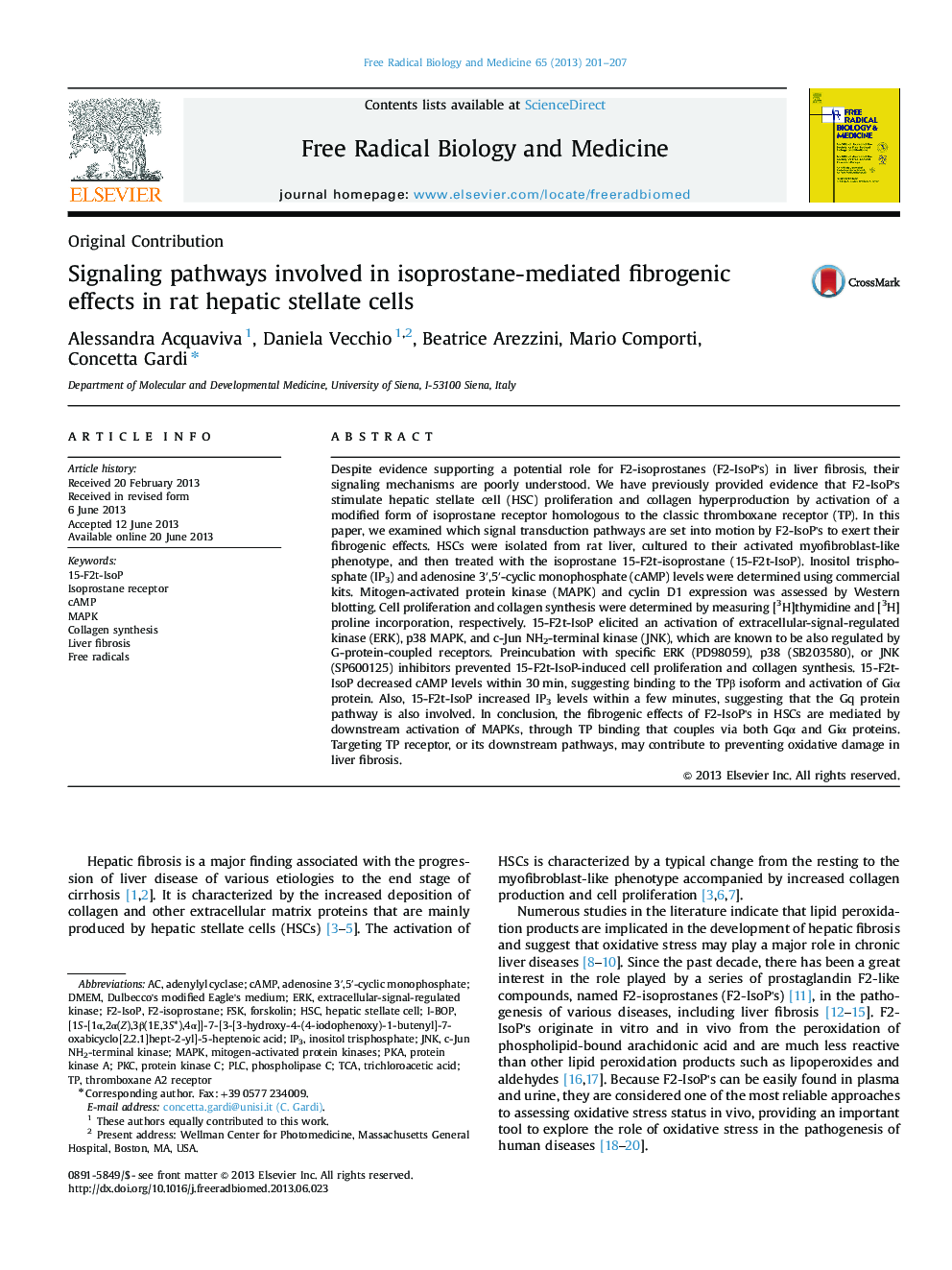| کد مقاله | کد نشریه | سال انتشار | مقاله انگلیسی | نسخه تمام متن |
|---|---|---|---|---|
| 8271264 | 1534977 | 2013 | 7 صفحه PDF | دانلود رایگان |
عنوان انگلیسی مقاله ISI
Signaling pathways involved in isoprostane-mediated fibrogenic effects in rat hepatic stellate cells
ترجمه فارسی عنوان
مسیرهای سیگنالینگ درگیر در اثرات فیبروژنیک ایزوپروستان در سلول های ستون مهره های موش صحرایی
دانلود مقاله + سفارش ترجمه
دانلود مقاله ISI انگلیسی
رایگان برای ایرانیان
کلمات کلیدی
pKaI-BOPF2-IsoP15-F2t-IsoPc-Jun NH2-terminal kinaseforskolinPKCPLCIP3HSCInositol trisphosphateERKDMEMTCAJnkFskcAMP - cAMPF2-isoprostane - F2-ایزوپروستانMAPK - MAPKDulbecco's modified Eagle's medium - Medal of Eagle اصلاح شده Dulbeccoadenosine 3′,5′-cyclic monophosphate - آدنوزین 3 '، 5'-سیکلیک منوفسفرهadenylyl cyclase - آدنیلات سیکلاز، آدنیلیل سیکلازtrichloroacetic acid - اسید ترشکلراکتیکFree radicals - رادیکال آزادHepatic stellate cell - سلول ستاره ای کبدیCollagen synthesis - سنتز کلاژنphospholipase C - فسفولیپاز CLiver fibrosis - فیبروز کبدیprotein kinase A - پروتئین کیناز AProtein kinase C - پروتئین کیناز سیextracellular-signal-regulated kinase - کیناز تنظیم شده خارج سلولی سیگنالmitogen-activated protein kinases - کیناز پروتئین فعال Mitogenthromboxane A2 receptor - گیرنده تری گلیسیرین A2
موضوعات مرتبط
علوم زیستی و بیوفناوری
بیوشیمی، ژنتیک و زیست شناسی مولکولی
سالمندی
چکیده انگلیسی
Despite evidence supporting a potential role for F2-isoprostanes (F2-IsoP's) in liver fibrosis, their signaling mechanisms are poorly understood. We have previously provided evidence that F2-IsoP's stimulate hepatic stellate cell (HSC) proliferation and collagen hyperproduction by activation of a modified form of isoprostane receptor homologous to the classic thromboxane receptor (TP). In this paper, we examined which signal transduction pathways are set into motion by F2-IsoP's to exert their fibrogenic effects. HSCs were isolated from rat liver, cultured to their activated myofibroblast-like phenotype, and then treated with the isoprostane 15-F2t-isoprostane (15-F2t-IsoP). Inositol trisphosphate (IP3) and adenosine 3â²,5â²-cyclic monophosphate (cAMP) levels were determined using commercial kits. Mitogen-activated protein kinase (MAPK) and cyclin D1 expression was assessed by Western blotting. Cell proliferation and collagen synthesis were determined by measuring [3H]thymidine and [3H]proline incorporation, respectively. 15-F2t-IsoP elicited an activation of extracellular-signal-regulated kinase (ERK), p38 MAPK, and c-Jun NH2-terminal kinase (JNK), which are known to be also regulated by G-protein-coupled receptors. Preincubation with specific ERK (PD98059), p38 (SB203580), or JNK (SP600125) inhibitors prevented 15-F2t-IsoP-induced cell proliferation and collagen synthesis. 15-F2t-IsoP decreased cAMP levels within 30 min, suggesting binding to the TPβ isoform and activation of Giα protein. Also, 15-F2t-IsoP increased IP3 levels within a few minutes, suggesting that the Gq protein pathway is also involved. In conclusion, the fibrogenic effects of F2-IsoP's in HSCs are mediated by downstream activation of MAPKs, through TP binding that couples via both Gqα and Giα proteins. Targeting TP receptor, or its downstream pathways, may contribute to preventing oxidative damage in liver fibrosis.
ناشر
Database: Elsevier - ScienceDirect (ساینس دایرکت)
Journal: Free Radical Biology and Medicine - Volume 65, December 2013, Pages 201-207
Journal: Free Radical Biology and Medicine - Volume 65, December 2013, Pages 201-207
نویسندگان
Alessandra Acquaviva, Daniela Vecchio, Beatrice Arezzini, Mario Comporti, Concetta Gardi,
